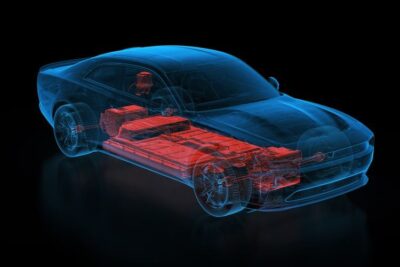EU battery regulation: dispute over calculation of the CO2 footprint of car batteries
In recent years, the EU has been working on a new EU Battery Regulation to regulate all types of batteries – including electric vehicle batteries – throughout their life cycle in order to promote the circular economy. The regulation came into force in August 2023. The majority of the provisions have been in force since mid-February 2024.
The EU Commission, which launched the 2020 initiative, now wants to tweak an aspect of the regulation. Specifically, it concerns the calculation of the CO2 footprint of car batteries. From 2027, the national electricity mix is to serve as the basis for calculation instead of the electricity actually used. The German car industry does not like this at all. It has already called on the traffic light government to intervene. This is because the national electricity mix is worse than in other countries, such as France, which rely on nuclear power or already generate more electricity from renewable sources, due to the proportion of coal and gas in energy generation in Germany.
According to the German publication Manager Magazin, around 40 per cent of the electricity produced in Germany in 2023 will come from fossil fuels such as coal and gas. The manufacturers want to build their batteries more ecologically through individual contracts (so-called Power Purchase Agreements, PPAs for short) with electricity providers and are now complaining that car batteries from German production are being counted as dirtier than they actually are because of the initiative. There are also fears that investment in battery factories with a particularly low carbon footprint will decline. This could apply to Northvolt’s planned cell factory in Heide, Schleswig-Holstein, for example.
The German Association of the Automotive Industry (VDA) warns in an initial statement: “The automotive industry itself has little influence on the overall national/regional energy mix. Overall, this draft is therefore at odds with previous approaches and would bring significant disadvantages for existing locations in Germany.”
In principle, the provisions of the EU Battery Regulation are intended to ensure the security of supply and stimulate the circular economy. Key points of the regulation are a mandatory declaration and labelling – including in relation to battery components and the proportion of recycled material – as well as an electronic “battery passport” and a QR code. In order to give Member States and economic operators in the market sufficient time to prepare, the labelling requirements will apply from 2026 and the QR code from 2027.
The minimum quantities of materials recovered from waste batteries have been set at 50 per cent by 2027 and 80 per cent by 2031 for lithium and 90 per cent by 2027 and 95 per cent by 2031 for cobalt, copper, lead and nickel. A certain proportion of these recovered materials must be used in new batteries. The minimum requirements are to come into force eight years after the regulation comes into force, probably in 2031, and amount to 16 per cent for cobalt, 85 per cent for lead and 6 per cent each for lithium and nickel. 13 years after entry into force, in 2036, they will rise to 26 per cent for cobalt, 12 per cent for lithium and 15 per cent for nickel. The lead quota will remain the same.
Requirements for stricter environmental and social due diligence obligations for battery players flank these criteria. In future, market participants will have to check the origin of the raw materials they use and the labour conditions in their supply chain. However, there are exceptions for small and medium-sized companies.
manager-magazin.de, presseportal.de, vda.de (all in German), ec.europa.eu (EU draft)





0 Comments